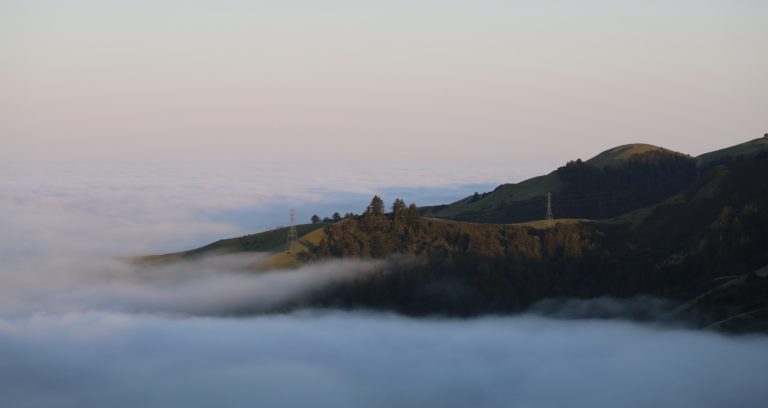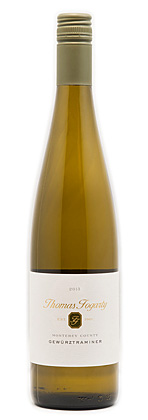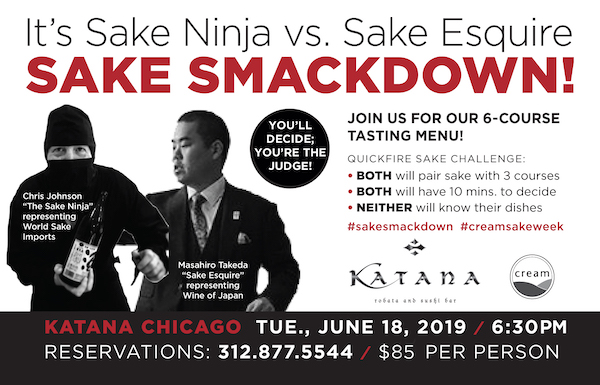| June 2019 | ||
| « May 2019 | News | Jul 2019 » |
June 27, 2019
Santa Cruz Rocks - Thomas Fogarty Winery

There’s a lot of reasons to visit Santa Cruz - redwood forests, soaring ocean coastlines, and a couple more days of sunshine than us here in Chicago. As it turns out, all that we love about the area is exactly what makes it such a great place for wine. Santa Cruz’s viticulture is defined by its mountainous topography and diverse microclimates. Near the fog filled coast, warm days and cool, breezy nights are ideal for highly concentrated, slow ripening fruits like Pinot Noir and Chardonnay. On the eastern side, warmer weather lends itself to the production of hearty reds, including Zinfandel, Cabernet and Merlot. To boot, the rocky, well drained soils of the region are also geologically complex, filled with clay, loam, limestone and decomposed rock.
The AVA went official in 1981, but Santa Cruz viticulture history goes back so far as the early 1800s, when Catholic missionaries first made their way to California. During the second half of the 19th century, the boom in the logging industry began clearing land ripe for vines, which proved to be quite timely, as the Gold Rush began bringing hoards of hopefuls to the region. Lured west by promises of riches, only to be soon sorely disappointed after a very long wagon ride, early French and Italian immigrants began planting vineyards in their new home.
As history would have it, Santa Cruz proved much more lucrative for wine than for gold. Gold Fever turned to Vine Fever, as rows of Pinot Noir, Cabernet Sauvignon, Chardonnay and Merlot flourished under the California sun. By the turn of the 20th century, there were over 40 small wineries in the region. Prohibition during the 1920s briefly dampened the mood, but the United States government could not keep us sober for long, and by the mid 20th century, the Santa Cruz wine industry was back in full swing.
Viticulture in the region was further enabled by the Williamson Act of 1965, also known as the California Land Conservation Act. Under the agreement, the government would cut property taxes for owners of farm and open space land if they left their properties undeveloped for at least ten years. Today, Santa Cruz’s is home to 60+ wineries and over 200 small vineyards - a community that is redefining California wines and making big strides in sustainable farming practices.
In 1976 Dr. Thomas Fogarty, a practicing heart surgeon and medical device inventor, decided to dedicate 350 acres of land to open space. Needing an active agriculture purpose for inclusion in the Williamson Act, but still undecided on what to grow, Fogarty was all set to turn his acres into a kiwi farm. Lucky for us, a few fellow Stanford physicians introduced him to a couple of Burgundy wines and Santa Cruz winemakers, and Fogarty decided to leave kiwis for the Italians and start planting vines.
 In 1977, Fogarty teamed up with Michael Martella, a fourth generation grape grower and winemaker in California. Over the next four years the two men planted six core vineyards, releasing the inaugural Fogarty vintage in 1986. Today, the property remains in the Williamson Act, which means that the entire estate is preserved as a heritage oak and fir forest. Fogarty Sr., now joined by his son Tom Jr., along with Martella, employ organic farming practices and minimal intervention winemaking. Just 10 miles from the ocean on the eastern side of the ridge, the estate’s vines are rooted 2,000 feet ASL in fractured marine shale and sandstone soils.
In 1977, Fogarty teamed up with Michael Martella, a fourth generation grape grower and winemaker in California. Over the next four years the two men planted six core vineyards, releasing the inaugural Fogarty vintage in 1986. Today, the property remains in the Williamson Act, which means that the entire estate is preserved as a heritage oak and fir forest. Fogarty Sr., now joined by his son Tom Jr., along with Martella, employ organic farming practices and minimal intervention winemaking. Just 10 miles from the ocean on the eastern side of the ridge, the estate’s vines are rooted 2,000 feet ASL in fractured marine shale and sandstone soils.
Through employing low intervention viticulture and viniculture practices, Fogarty’s wines show all there is to love about Santa Cruz terroir, with lower vigor, tension and acid. Fava and oats are planted as cover crops, bacillus and mineral oil combat mildew, and minimal (if any) irrigation is deployed during the growing season.
 Thomas Fogarty 2015 Gewurztraminer, Monterey County
Thomas Fogarty 2015 Gewurztraminer, Monterey County
If you are as eager as Wine Spectator for a Big Little Lies ladies’ trip to wine country, you can stave off your excitement this season with this Monterey white.
Balance is key in this Gewurztraminer. Notes of green apple, lychee and melon are matched with classic jasmine and ginger aromatics. This vintage is rich in body, with a killer balance of sugar and acid. Pair with chicken, grilled night shades and spicy curries.
 Thomas Fogarty 2014 Pinot Noir, Santa Cruz Mountains
Thomas Fogarty 2014 Pinot Noir, Santa Cruz Mountains
Don’t miss out on Fogarty’s Pinot Noirs - this 2014 vintage is fresh and floral, with notes of pepper, bright red stone fruit and roses. Full of energy, the flavors and texture of this wine are unmistakably Santa Cruz Mountains.
 Thomas Fogarty 2016 Chardonnay, Santa Cruz Mountains
Thomas Fogarty 2016 Chardonnay, Santa Cruz Mountains
This one’s filled with aromas of pear, pastry cream, subtle spice and blanched almonds. On the palate, it is satiny and flavorful and built around bright acidity but also cut from a more giving cloth than the more structured, taut vineyard-designate bottling. The finish is long and pure. Enjoy this in its youth or for the better part of a decade.
June 26, 2019
FEATURED: Boiling Point 173! Cream Spirits Portfolio Tasting
Hey trade - mark your calendars! We’re excited to invite the beverage community to our first ever spirits portfolio tasting on Monday, July 22nd from 1pm - 4pm.
June 06, 2019
SAKE SMACKDOWN AT KATANA

Tuesday, June 18, 2019
6:30pm // $85 per person (not inclusive of tax and tip)
Call Katana Chicago for reservations: (312) 877-5544
For International Sushi Day 2019, we’ve decided to do something extreme, something that perhaps has never before been done in Chicago. We’re putting The Sake Ninja Chris Johnson and Sake Esquire Masahiro Takeda to the test in a quickfire sake pairing challenge.
Join Cream and Katana for this 6-course tasting menu with a twist. Both Chris Johnson, representing World Sake Imports, and Masahiro Takeda, representing Wine of Japan, will pair their sake with 3 of the courses. The catch? Neither will know the dishes until the night of the dinner! A coin toss will decide who goes first. Then, each will have 10 minutes to try their course before it’s served and choose a sake from their portfolio to match. There’s another catch! Only 6 sakes from each portfolio will be available that night, and they cannot use a sake more than once.
Who will win this game of flavors?
You decide. During the dinner, guests will rate the sake pairings to declare either The Sake Ninja or Sake Esquire the “King of Flavor!”
#sakesmackdown // #creamsakeweek
The Sake Ninja Chris Johnson
Chris Johnson is Chris Pearce’s right hand man and represents World Sake Imports in the U.S. World Sake Imports (established in 1998 by Chris Pearce) represents regional sake breweries and shochu distilleries that produce premium beverages. The breweries are among the most respected in Japan; they are standard-bearers for the industry in terms of quality, innovation and technical mastery. Chris Johnson’s accolades include: sake sommelier certified by the Sake Service Institute, member of the board of directors for The Joy of Sake, judge for the U.S. National Sake Appraisal since 2000, Level 3 sake educator certified by WSET, Sake Samurai title earned in 2013.
Sake Esquire Masahiro Takeda
Third generation Masahiro Takeda is currently the vice president of Wine of Japan (and yes, he is also a lawyer). Established in 1973, Wine of Japan is one of the oldest family owned and operated national importers and distributors of ultra-premium Japanese sake, spirits and beer. With over 42 years of experience, WOJ continues to introduce the best Japan has to offer to an ever-growing audience in the United States. Keeping current with evolving consumer palates, the portfolio is continuously evaluated and curated to ensure that only the most exclusive and select products are offered. Longevity is a testament to WOJ’s expertise, foresight, and unrelenting focus on customer service.
June 03, 2019
FEATURED: Cream Sake Portfolio Tasting & Seminar
Thank you for attending!
